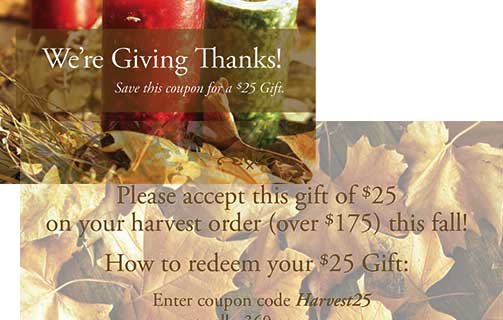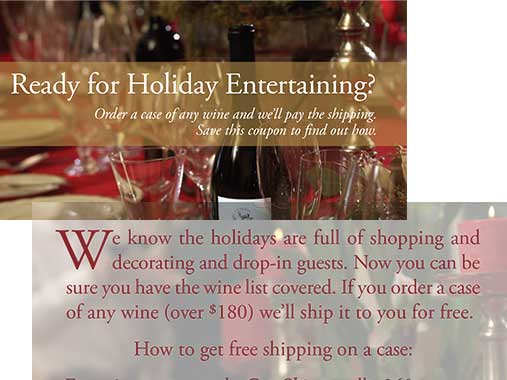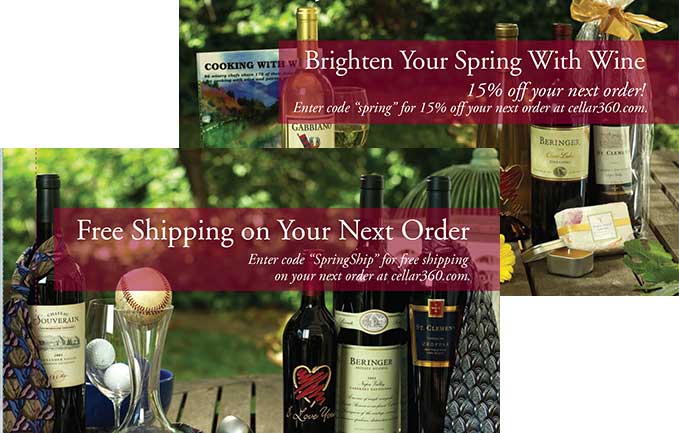The naughty and nice of holiday offers
You spent hours fussing over the most compelling copy, cleaning up your mailing list, and running all the logistics through legal and compliance. With all the thought that goes into holiday mailings, the one thing that is often overlooked is the offer itself.
Here are some tips for making sure your efforts pay off.
KNOW YOUR NUMBERS
That will tell you how much you need to sell and at what price. (Which, in turn, will provide a clear idea if you should be developing a case or a bottle offer.) Your inventory is also key here – you can only sell what you’ve got on hand – and sometimes this will dictate the offer. If your Chardonnay has been sitting too long, a little flexibility in the margin may be preferable to a flash sale. (For tips on this, see our post on how to calculate ROI.)
Below is the front and back of a direct mail piece with the objective of improving on last year’s sales.
Last year’s average order value was $175, so we gave the incentive to buy more.
It worked and the average order value for this campaign was $195.

BE CREATIVE
In the example above you’ve done your math and you know that you need to move cases and heard your customers and know that shipping is the #1 concern of your club members. But this is not news. How many case shipping offers can you do in a row? Try some variations. While some may respond to “Spend $100 and get $20 back” someone else will jump at a “20% off” offer. You have a lot of variables to play with – shipping fees, taxes, % off, dollars off, bundled prices, Buy One Get One (BOGO) – try different things.

In this example, we were trying to move volume,
and we knew that the biggest complaint was shipping charges. Note: you can’t say Free Shipping in the US.
You hire photographers for your wine, graphic designers to build your emails and printers to print and mail your holiday promotions.
Like little random motivational notes in your lunchbox from Mom. The fourth reason you should care about review sites is that your customers care about review sites. 92% to 97% of customers look for or read a review before doing business with a company. 80% of us trust reviews by strangers just as highly as a reference from our friends. 72% of us look for only positive reviews, and 86% will not do business with those with negative reviews. (Clutch.co)
And it is surprising how quickly comfort levels fall when you go from five to one-star ratings. 94% of us will use a business with a four-star rating, but only 14% will consider a two-star rated business.
My advice is to be familiar with what people say about you. Search your brand. Know where you and your wine show up and what feedback you’re receiving.

Some examples of various languages and testing to see what resonated best.
The top example was to the non-wine club (the Wine Club got 20% off and you never want to have competing offers).
The bottom was a trial shipping offer, but note: you can’t say Free Shipping in the US.
WHEN THESE THREE COME TOGETHER.
Maybe Cabernet sold really well last winter, but this year you’re behind on volume. Perhaps a Cab 6-pack or case offer will pick up the slack this season. If you need some revenue coming in (versus volume) and your Wine Club is primarily local, choose a high-priced item for a limited BOGO offer. The point is if you know your numbers, audience, and goals, you can be creative and make sure that your offers are more than just pretty pictures of wine bottles.
Cheers and happy selling season!


